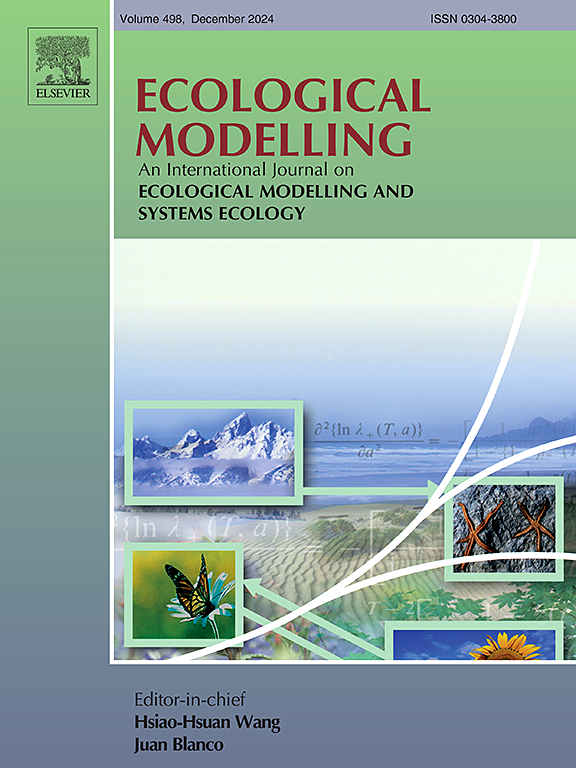A new growth curve and fit to the National Forest Inventory data of Finland
IF 2.6
3区 环境科学与生态学
Q2 ECOLOGY
引用次数: 0
Abstract
Predictive models for stem volume increment are needed for many purposes, including the analysis of cutting potential and carbon balance. Motivated by a simple simulator based on age distribution and growth curve of a certain forest type within region, we present a new growth function for the volume increment as a function of stand age. The function is inspired by a mechanistic description of tree crowns and growth process, where the annual gross primary production is proportional to the theoretical area of the forest canopy when projected to the ground, and respiration is proportional to the accumulated growing stock volume. The function has four parameters with biologically meaningful interpretations. The function treats the annual increment as an instant event associated with ages that are non-negative integers. We also show how such a model for annual increment can be estimated based on National Forest Inventory (NFI) data of past 5 year’s increment in the context of nonlinear regression modelling. The model showed extremely good fit in a data set of 34000 remeasured NFI plots from Finland. Comparison with the widely used Richard’s function further indicates that the new function may provide a significant improvement to forest growth modelling. The new function and the approach to estimate current annual increment based on the periodic annual increments of past 5 years opens interesting new opportunities to the use of NFI data sets in scenario analyses of the growth, removals and carbon sinks in long term, which are also illustrated.
求助全文
约1分钟内获得全文
求助全文
来源期刊

Ecological Modelling
环境科学-生态学
CiteScore
5.60
自引率
6.50%
发文量
259
审稿时长
69 days
期刊介绍:
The journal is concerned with the use of mathematical models and systems analysis for the description of ecological processes and for the sustainable management of resources. Human activity and well-being are dependent on and integrated with the functioning of ecosystems and the services they provide. We aim to understand these basic ecosystem functions using mathematical and conceptual modelling, systems analysis, thermodynamics, computer simulations, and ecological theory. This leads to a preference for process-based models embedded in theory with explicit causative agents as opposed to strictly statistical or correlative descriptions. These modelling methods can be applied to a wide spectrum of issues ranging from basic ecology to human ecology to socio-ecological systems. The journal welcomes research articles, short communications, review articles, letters to the editor, book reviews, and other communications. The journal also supports the activities of the [International Society of Ecological Modelling (ISEM)](http://www.isemna.org/).
 求助内容:
求助内容: 应助结果提醒方式:
应助结果提醒方式:


